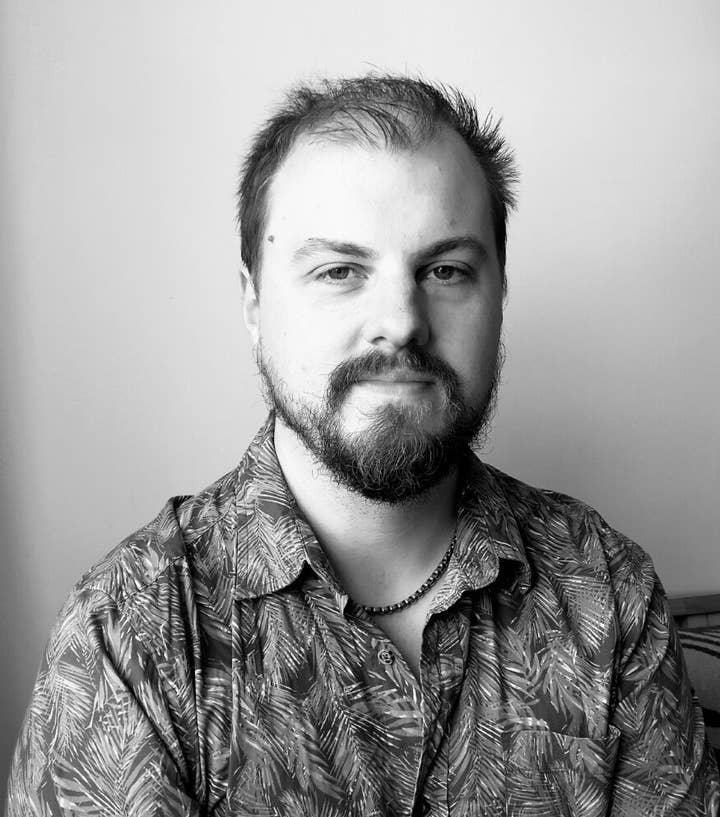The technical artists balancing polycounts and visual quality
Games' greatest visuals might freeze computers and crash consoles if not for intensive optimisation by technical artists
Elite: Dangerous' galaxy map is a technical masterpiece. The game's 400 billion star systems are impressive on their own, let alone with the ability to view every sun, every planet, and every astronomical phenomenon, each generated from complex theoretical algorithms that predict their positions in space with accuracy, in real time. But Elite has that too in all its visual beauty, and a lot of it is thanks to the work Frontier Developments' technical artists.
An often overlooked facet of game development, technical artists act as a bridge between the programming department and the art studio, ensuring assets, textures, and particle effects can be integrated into a game without sacrifice of the artistic vision, and ensuring the performance of the final product isn't forfeit either.
"When I left university I had no idea. I don't think we had anyone from the industry come to talk to us"
Last week I went to BFX, Bournemouth's annual visual effects festival, where I watched talks by two technical artists from well-known corners of the UK industry. One was Matt Dickinson, head of technical art and rendering at Frontier Developments, who detailed some of the skills that technical art requires.
"You need to show that you're a very good communicator, a very strong problem solver," Dickinson said, adding that there aren't really any 'do-nots' when it comes to his field.
"You're never going to find anyone that ticks all the boxes. What we want to find are the people we feel very confidently will tick the boxes themselves. People that can demonstrate an ease of learning new techniques, new abilities... I joined 13 years ago, and I've had to change how I work and how I learn the things that I do day to day. We need people like that."
Dickinson mentioned how exciting it is for him to be delivering talks at an event like BFX, attended by a lot of students and enthusiasts looking to break into the industry. Here, he can talk freely with people who share a passion that many look past when thinking about game development.

"It's interesting to see how people develop, and how things are taught these days and where the interest lies," he said. "When I left university I had no idea. I don't think we had anyone from the industry come to talk to us, so I'm really happy to be involved, to stand up there - slightly nerve wracking in front of loads of people - to talk about what we do, why we love it, and hopefully inspire other people to get some passion from it."
And it's not just these talks that Dickinson enjoys; working at Frontier, the developer of Elite: Dangerous and Planet Coaster, comes with a lot of benefits. "It's somewhere that really looks for people rather than just numbers to fill slots. It looks for the creativity in people. It's a big meritocracy. People advance at a natural rate there, we try to never hold people back.
"I don't think there's a single person that works at Frontier because they need a job. Everyone is there because they love what they do, and that comes out in their work day to day. It's a massively positive place."
However, regardless of the quality of their work environment, technical artists will always run into some pretty complex challenges; Dickinson is no exception, and one of the biggest challenges he has faced was Elite: Dangerous' aforementioned galaxy map. "For some reason I volunteered to look after this, but we had a lot of very talented people that came up with some very clever ideas to do that."

And it really is a feat of technical skill; every star in the night sky positioned in its correct spatial location, and "the rest of the stars are all in their correct theoretical places using the maths and all the constants within the galaxy. All this is calculated at run-time, so the galaxy runs all these complex algorithms to work out the materials that form. They'd give form to different planets and different orbits, random chances of calamities that would befall systems... It's massively complex."
Technical artists wrestle with complexity every day in their line of work, and often they have interesting stories behind them. Jodie Azhar, lead technical artist at Creative Assembly, started as a character rigger, and has now stepped away from the the historical simulations for which the studio is know to work on Total War: Warhammer.
"We had to build a rigging system that accommodated not only bipeds, but creating things with wings, things with multiple arms, legs, heads," she told me. "They'd mostly been working on historical games that involved a lot of people. The previous games had been Rome II and Attila, and we were going to be making Warhammer, which involved a lot of creatures."
"The biggest part is being able to highlight to young women that we do have people who are being recognised for what they do"
As well as presenting this challenge, Creative Assembly has also been presented with a lot of creative freedom from Games Workshop. "Especially with things that you can't display in tabletop, like animations and VFX, our artists have had a lot of control over how those look, and visualising them," Azhar added. "We still need to get everything approved by Games Workshop, but it's been a really fun and exciting process of essentially being able to be really imaginative, and seeing how far we can push things with the tech, rather than being held back by design."
Azhar has been nominated for multiple Women in Games awards, and is one of the first UK Women in Games Ambassadors, a title of which she is clearly proud. "I think the biggest part ... is being able to highlight to young women and other people in the industry that we do have people who are being recognised for what they do, and that it is a welcoming place, and that we want other women to be part of the industry.
"It's about sharing ideas. If you're in a room with lots of people who have the same ideas, who are agreeing with you, you don't spark those interesting new ideas. It's less innovative if everyone is agreeing, whereas if you introduce new ideas into the mix, even those people who are perhaps the norm, they come up with new exciting ideas."
Azhar hopes that her position as a lead serves as an example to other up-and-coming women in the industry. She believes that one of the most satisfying things about being in her current role is, "to be able to represent that women can achieve the positions where they're able to manage teams, and to influence decisions so that other people will hopefully aspire to those roles, and make the whole of the games industry more diverse."
Azhar also shared her advice for those looking to break into technical art; advice that shares a lot of similarities to that offered by Dickinson. "You have to understand how artists think, what their processes are, and pipelines. You also need to understand a scripting language; we build tools so if you understand a scripting or programming language that's brilliant."
Her final point is not only a very good piece of advice, but it neatly summarizes why technical artists are such an important facet of games development. "You need to be a people person and a problem solver," Azhar said. "That means being able to go up to other people and look at what they're doing. To be able to talk to them to figure out what their problems are, and come up with solutions that'll actually work for those people rather than just a tool that can do the job."
